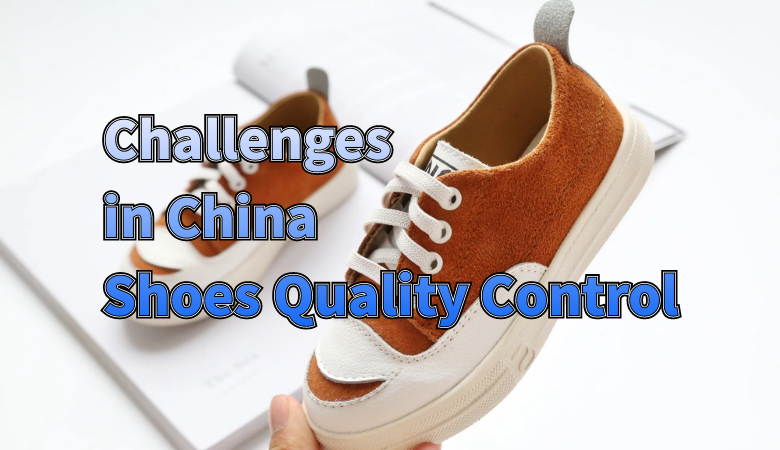Quality control plays a crucial role in footwear manufacturing, especially in China, which serves as the global hub for footwear production. Companies are able to source a wide range of styles and types of shoes here.
Ensuring consistent quality in such a large production scale is a challenge. From differences in manufacturing standards to communication difficulties, enterprises face multiple obstacles when managing quality control of footwear.

This article primarily explores some common work challenges that people frequently encounter and offers viable solutions to overcome these issues.
One of the most common challenges lies in the disparities in manufacturing standards and quality control processes across different factories. Different suppliers may possess varying levels of technology, equipment, and quality control processes, resulting in differences in the quality of the final products.
Solution:
To address this issue, the key lies in selecting reliable suppliers, and these suppliers must have a good track record of maintaining high standards. Conduct comprehensive audits on potential factories to assess their capabilities and quality control processes.
Establish clear quality requirements and performance benchmarks to ensure that all suppliers adhere to unified standards. Regular audits and inspections can help monitor suppliers' compliance.
When sourcing shoes from China, it can be challenging for companies to remotely monitor the entire production cycle. In the absence of clear transparency, ensuring that quality standards are consistently adhered to becomes even more difficult.
Solution:
To enhance transparency, enterprises can engage third-party inspection service providers to oversee key production stages. Maintaining regular communication with suppliers is also crucial, enabling timely resolution of issues when they arise.
Utilizing real-time video streaming and detailed reporting tools can enable enterprises to gain a more comprehensive understanding of the production process.
Language differences and cultural misunderstandings may affect the communication of quality standards between international enterprises and Chinese suppliers. Misinterpretation of quality requirements may lead to defective or low-quality products.
Solution:
This challenge can be addressed by hiring professional translators and interpreters, especially those experienced in technical language related to quality control.
Hiring quality inspectors who are familiar with the language and culture can help bridge the communication gap and ensure that quality expectations are accurately conveyed.
Adhering to global standards such as CE, ASTM, and CPSIA is crucial for footwear exports to international markets. However, many Chinese manufacturers may not be fully aware of these standards, which could lead to compliance issues and delays.
Solution:
To ensure compliance, one can collaborate with certified testing laboratories and inspectors who are familiar with these international standards. It is required that suppliers undergo regular compliance checks and ensure they possess the necessary certifications. Partnering with third-party testing agencies that specialize in regulatory standards can help simplify this process and reduce the risk of non-compliance.
When sourcing footwear from China, many companies find themselves unable to directly oversee the manufacturing process. This lack of control can lead to variations in product quality, especially when factories do not strictly adhere to production processes.
Solution:
The solution to this problem is to conduct regular audits on suppliers and establish strict quality checkpoints during the production process. By setting clear technical specifications and conducting quality inspections at different stages, it can be ensured that the final product meets the required standards.
Establishing good supplier relationships helps to control the production process more directly.
Delays in production or transportation can severely affect the quality control process, as rushing to meet deadlines often leads to the neglect of crucial quality inspections.
Solution:
By establishing closer relationships with suppliers and agreeing on clear production and delivery schedules, delays can be minimized. Utilizing project management tools to track production progress in real time and develop contingency plans for potential delays can help avoid quality issues. Intervening early in potential delays can help avoid quality issues. Make a final compromise.
Many people believe that implementing strict quality control measures can be very expensive, especially when working with Chinese suppliers. Although costs may increase, the long-term benefits of high-quality products far outweigh the initial investment.
Solution:
By outsourcing quality control services to professional third-party providers, costs can be effectively controlled while maintaining high standards. These outsourcing service providers typically possess efficient management and professional skills, helping enterprises maintain high quality without incurring high internal costs.
Defective products may be delivered to consumers, which can affect the brand's reputation.
Solution:
By conducting pre-production inspections at the beginning of production or quality control during production, defects can be identified as early as possible, effectively preventing defective products from reaching the market. Establishing clear return and replacement policies and ensuring timely handling of defects can reduce the return rate and protect brand reputation.
China's footwear quality control faces many challenges, but as long as appropriate strategies are adopted, enterprises can effectively overcome these difficulties. Every step, from selecting the right suppliers to ensuring compliance with global standards, is crucial to ensuring high-quality products. By addressing issues related to production transparency, communication, and compliance, companies can optimize their quality control processes and maintain a competitive edge in the global market.